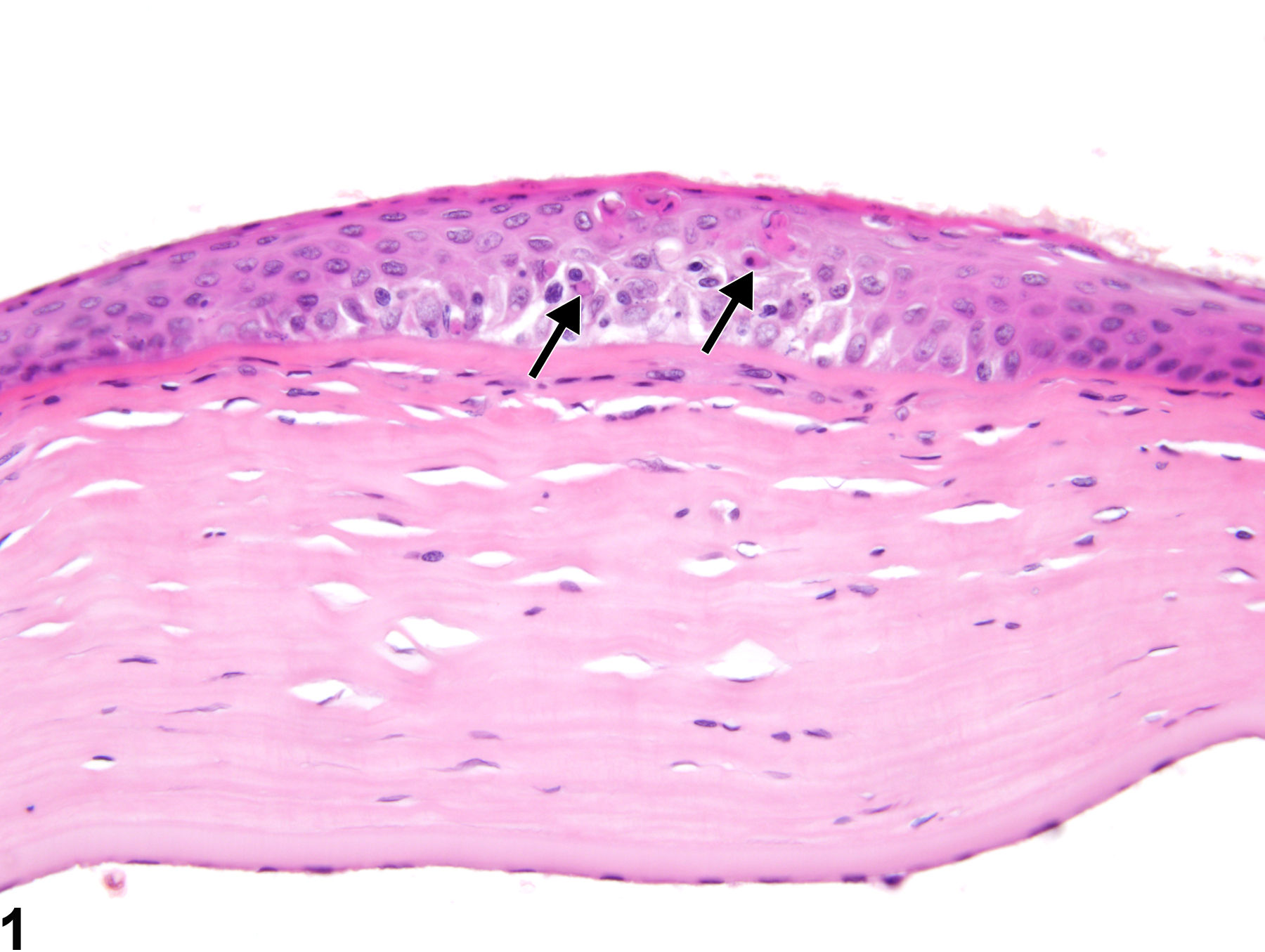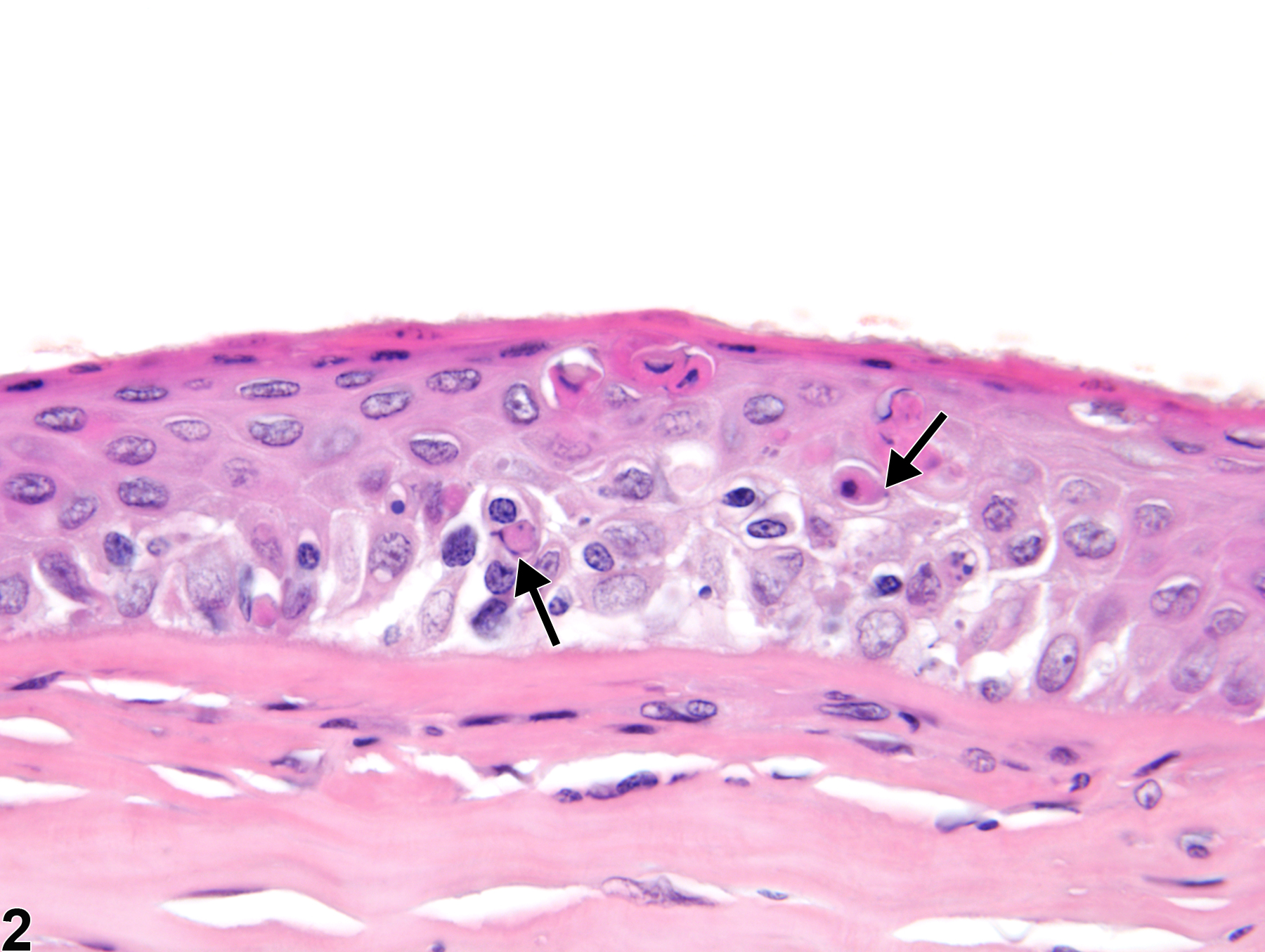Special Senses System
Eye, Cornea - Necrosis
Narrative
Maurer JK, Parker RD, Carr GJ. 1998. Ocular irritation: Microscopic changes occurring over time in the rat with surfactants of known irritancy. Toxicol Pathol 26:217-225.
Abstract: http://tpx.sagepub.com/content/26/2/217.shortNewkirk KM, Chandler HL, Parent AE, Young DC, Colitz CMH, Wilkie DA, Kusewitt DF. 2007. Ultraviolet radiation-induced corneal degeneration in 129 mice. Toxicol Pathol 35:817-824.
Full Text: http://tpx.sagepub.com/content/35/6/817.fullNational Toxicology Program. 2004. NTP TR-515. Toxicology and Carcinogenesis Studies of Propylene Glycol Mono-t-butyl Ether (CAS No. 57018-52-7) in F344/N Rats and B6C3F1 Mice and a Toxicology Study of Propylene Glycol Mono-t-butyl Ether In Male NBR Rats (Inhalation Studies). NTP, Research Triangle Park, NC.
Abstract: https://ntp.niehs.nih.gov/go/7724West-Mays JA. 2006. The keratocyte: Corneal stromal cell with variable repair phenotypes. Int J Biochem Cell Biol 38:1625-1631.
Abstract: https://www.ncbi.nlm.nih.gov/pmc/articles/PMC2505273/
Eye, Cornea - Necrosis in a female F344/N rat from a chronic study. There are shrunken, hypereosinophilic, necrotic cells (arrows) and corneal epithelial hyperplasia.



